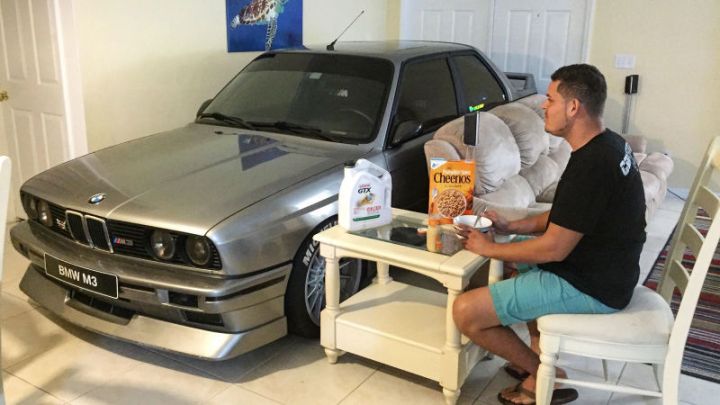
Jalil resides in Port St. Lucie, Florida, which was originally thought to be in the destructive path of Hurricane Matthew. Like any passionate gearhead would, Jalil garaged two of his vehicles (also BMWs, by the way), but still needed a spot for his E30 M3 to take refuge. That’s when he took note of his wide front doors and went hunting for a tape measure.
After measuring, Jalil realized he’d have plenty of room to park his M3 right inside his living room, and that’s exactly what he did. Safe from the gales Hurricane Matthew but not too far from the kitchen, we can’t think of a better place for an M3 to hibernate, and we’d say it livens up the room quite nicely.

“I’ve owned my E30 for about eight years now and the last few years there was a spike in value with these cars. I wasn’t risking anything!” Jalil told CarBuzz. “This car is absolutely my pride and joy and I will own it for years to come.”
Read more: BMW, Toyota, and Allianz invest in Nauto to learn about driver behavior
Thankfully, Matthew didn’t hit Port St. Lucie as hard as it was first predicted, but in Jalil’s mind, you’re better safe that sorry. As for the vehicle, it’s mostly stock (Jalil refers to it as OEM+), with only a few choice mods and a handful of miles separating it from factory condition.
I currently daily drive the car and enjoy it as much as possible. Most people nowadays will keep them tucked away in their garage to keep the value up. Cars are meant to be driven and I will always live by that.”
For more pictures of the car, check out Jalil’s Instagram page.


